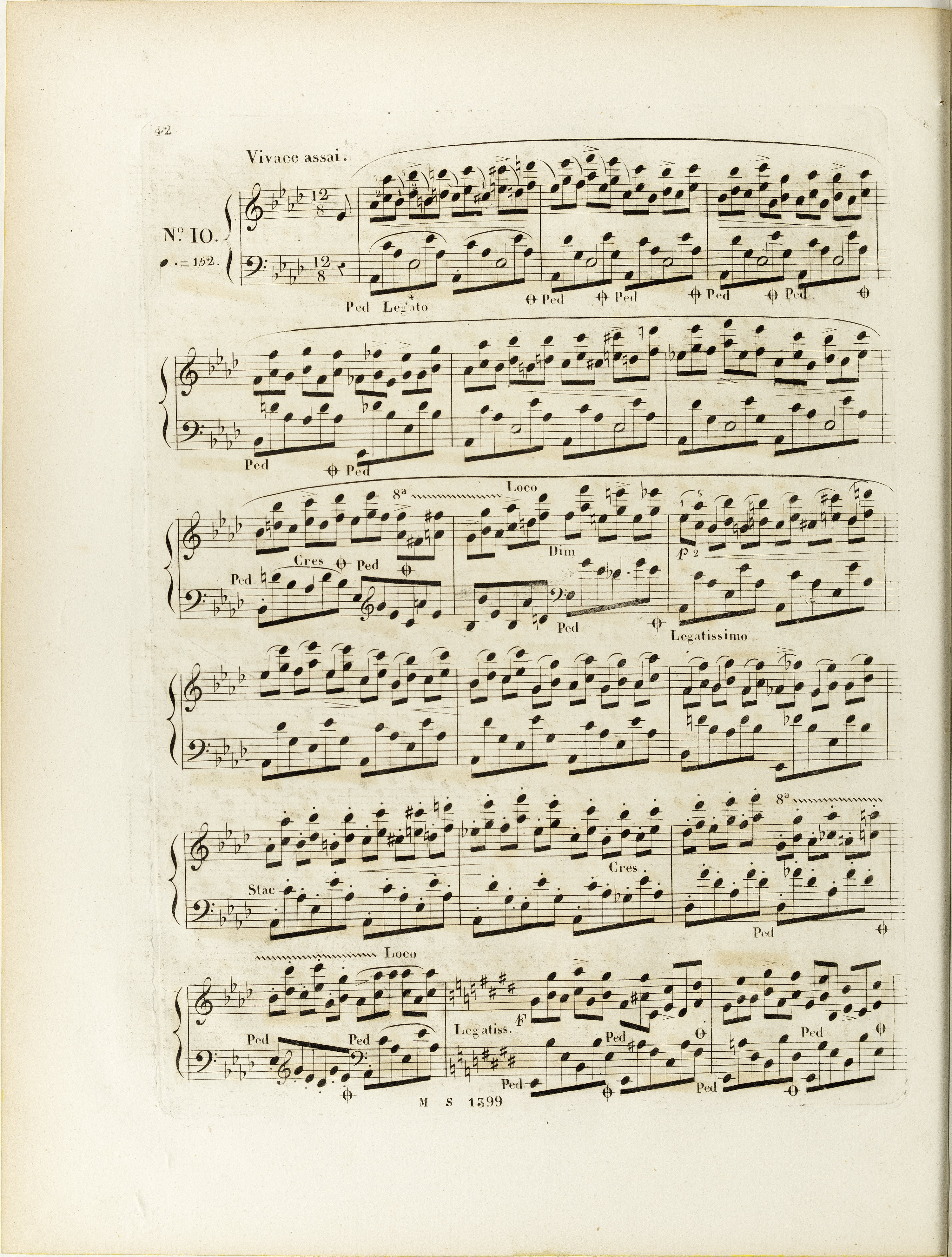



The homogeneous texture of the Etude, naturally imposing the position of hands and arrangement of fingers, does not require detailed fingering indications. In A Chopin provided fingering of the R.H. for only a few first quavers and the beginning of bar 9, while in the L.H. he indicated twice the 4th finger in bar 1 and the 5th finger in bar 54. While proofreading FE(→GE), he still added a few indications for the R.H., assuring the performer that the 1st finger is also to be applied on black keys (the 9th quaver in bar 1) and that the basic scheme is to be used also while transferring the hand to more extensive spans (e.g., bars 28, 43 and 45).
For the vast majority, the additions of Chopin's indications performed by Fontana in EE – in bars 1-2, 4, 7-9, 42, 45-47, 54-55, 63-64 and 73-75 – either repeat the schemes given by Chopin as models to generalise in similar situations or complement them with elements which are clearly determined by the hand's arrangement on the keyboard. Only in bars 7 and 63 the proposed additions do not clearly follow from Chopin's fingering and natural position of the hand on the keyboard.
Compare the passage in the sources »
category imprint: Differences between sources
issues: EE revisions, Errors in FE, Errors in GE, Authentic corrections of FE
notation: Fingering





